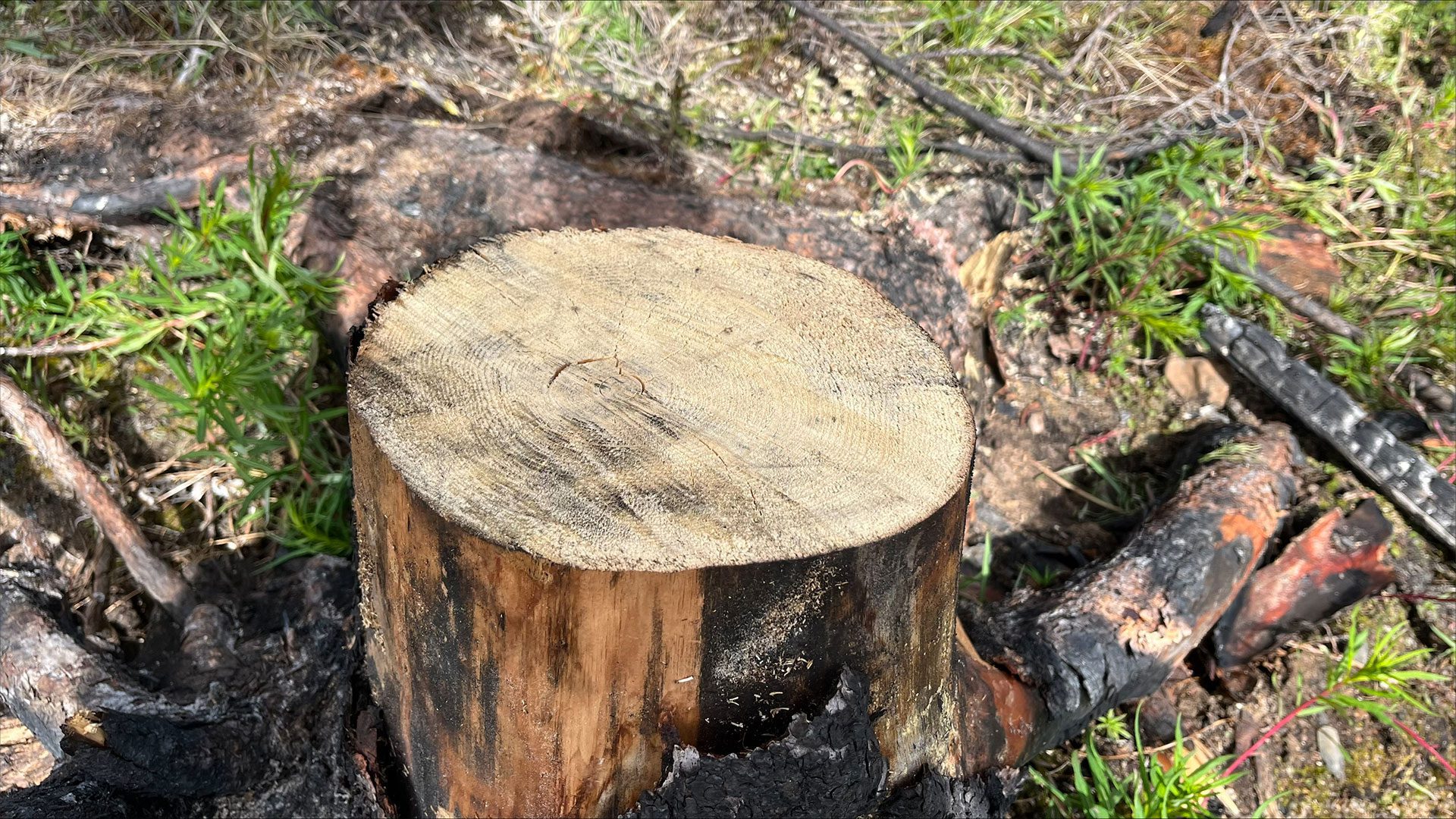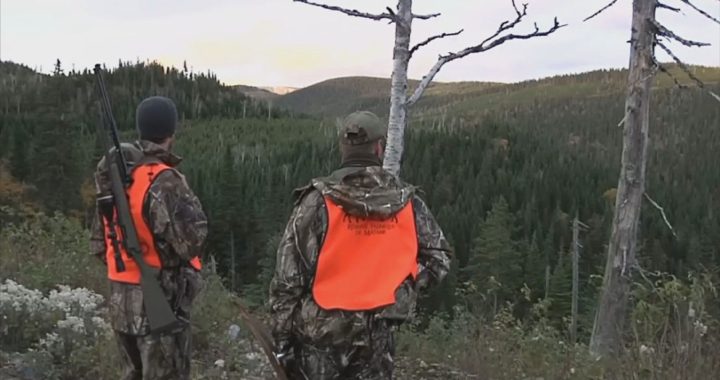
Forrestry experts and members of the Tlicho Nation discuss where to replant trees after wildfires. Photo: Charlotte Morritt-Jacobs/APTN News
The Tłı̨chǫ Nation is helping to heal the land devastated by wildfires one tree at a time.
It’s the largest reforestation project in the Northwest Territories, with one million trees set to be planted on Dene First Nations land over the next three years.
Last year’s unprecedented wildfire season led to the evacuation of Behchokǫ̀ and Wekweètì, two Tłı̨chǫ communities. Homes and cabins were destroyed, and vast areas of ancient forests were destroyed.
The tree-planting project officially kicked off last month with a blessing ceremony, and friendship trees were planted in the Behchokǫ̀ neighborhood of Edzo to welcome biologists and funders of the project.
Tony Rabesca, a local knowledge keeper, helped lead the drum songs.
“One thing Creator gave us is the tree, and elders always said the tree is living and could hear us,” Rabesca told the group.
“The tree roots give us life and shelter. We are asking Creator to give us guidance and support to bring back the trees.”

Behchokǫ̀ Chief Clifford Daniels said the work would be guided by traditional knowledge and supported by Western science
“The fire has affected us personally,” Daniels said,noting “now we see a charred land, and we want to make sure that the trees have an opportunity to grow faster than before.
“This is going to be a big effort and I think we are going to show other future projects that this is doable and achievable.”
Last fall, the Tłı̨chǫ nation signed a memorandum of understanding with Let’s Plant Trees Ltd., a British Columbia-based Indigenous reforestation program, along with Tree Canada, a national non-profit.
They will plant a variety of white and black spruce, birch, aspen and tamarack.
Tammy Steinwand, director of culture and land protection with Tłı̨chǫ, said the project aims to address climate change, promote ecosystem restoration, and boost economic development by employing local residents.

“Last year, we had a bunch of seedlings collected (that were) being grown in Saskatchewan and once they become a certain size they will come back here,” Steinwand said.
“What we are doing here today is going up with the helicopter to look at the different sites where we want to plant these trees.”
Within their traditional territory, most caribou habitat disturbance is caused by wildfire rather than humans.
After the blessing ceremony, Tlicho elders, environmental monitors and forestry experts flew by helicopter to a previously burned area to identify potential spots for planting.
The area has charred black spruce that has not yet regenerated naturally, so scientists determined from a walk-through there was value in planting there.
“We have collected enough seeds to plant 3 million trees,” said David Tonken, president of Let’s Plant Trees.
“We’ll bring the knowledge back, sit down and discuss what we have learned, what we have assembled, and get permission then to move forward.”
Tonken said the project aims to assist Tłı̨chǫ in sharing its expertise and experience with other Dene nations whose lands are impacted by wildfires and climate change.
“As far as helping regenerate Mother Earth we think we can help advance this by 80 to 120 years,” Tolken added. “That’s three to four generations sooner that these trees would be available for the caribou and the other fur-bearing animals.”
Tree planting in remote regions is expensive. Tolken said the project will be somewhat experimental and more costly as the needed skills, equipment, training and access are all being newly developed.
For instance, project managers will need to weigh the costs of helicopters with the efficiency of planters.
This year, the project continues to gather local seeds, with an average of eight months needed for testing, germination, sowing and growth.
So far, the federal government has provided the Tłı̨chǫ government with $150,000 for regional reforestation projects.

Along with restoring the habitat, the project involves planting fire-resistant trees like aspen.
“These trees can burn again; there was 110,000 hectares on the 2023 burn that were a re-burn – meaning the dead trees caught fire again,” said Tolken. “Climate change has made it dry, so we need to plant firesmart areas around your community.”
Once the project determines the locations for tree planting, it will specify the number of planters needed for each site.
A rough estimate from Tolken suggests they’ll draw 20 planters from the local community and 40 from outside the community.
They also plan to source 90 percent of food, accommodation, helicopters, camp equipment, drinking water and portable toilets locally.










